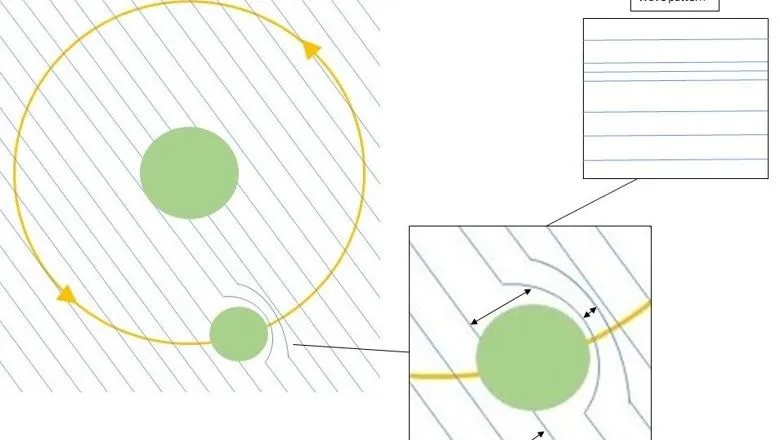19 October 2017
King's College London and gravitational waves
The fields of physics and mathematics have been examining the concept of gravitational waves for over a century and academics and researchers at King’s College London have been, and still are, at the forefront of this work.

After the initial theoretical prediction of gravitational waves by Albert Einstein 100 years ago; the stage was set for their detection by two King’s College London professors from the Department of Mathematics. Sir Hermann Bondi proposed, along with Richard Feynman, the original thought experiment which started to move gravitational waves from the purely theoretical into a potentially tangible experimental space. This led to the first attempts to create a gravitational wave detector. Felix Pirani’s work also influenced early designs and experiments. Bondi and Pirani worked together at King’s Department of Mathematics during the 1950s and 1960s on theoretical evidence and mathematical proof for the existence of gravitational waves.
Gravitational waves are a type of radiation produced by an object passing through spacetime - sometimes referred to as the ‘fabric of the universe’. Like stirring toffee in a pan, spacetime is distorted as the object (or spoon) pushes into it causing it to contract and leaves a wake in its path. In orbiting or rotating objects a wave pattern will be produced as the object reaches each recurring point in its orbital or rotational path causing this contraction and wake effect again and again. It is this wave pattern which was detected by LIGO leading to the awarding of the Nobel Prize in Physics 2017 to Rainer Weiss, Barry C Barish, and Kip S Thorne.
The Prize was awarded ‘for their decisive contributions to the LIGO detector and the observation of gravitational waves.’ The LIGO detectors allowed the first direct observation of gravitational waves; previously only the effect of the waves could be observed. Gravitational waves are observed and measured by firing a laser beam which is split down two equal length arms of an L shaped instrument. Both beams are reflected by mirrors up and down the arms at the same rate; if the light wave patterns from the laser beam do not remain synched then the spacetime has been distorted by a gravitational wave, lengthening or contracting the distance the beam travels between one set of mirrors. In addition to detecting the waves the LIGO/VIRGO installations were able to pinpoint their locational origin for the first time.
King’s continues to be involved in the field of gravitational waves to this day. Professor Mairi Sakellariadou, President of the "Gravitational Physics" Division - European Physical Society from the Department of Physics and member of LIGO uses the data produced by the twin LIGO, as well as Virgo, detectors in order to test theoretical models beyond Einstein’s theory of General Relativity and beyond the standard cosmological model. Her work contributes to the commencing era of gravitational-wave astronomy and multi-messenger astronomy which we hope will lead to new discoveries and provide fresh insight into our cosmic origins.
